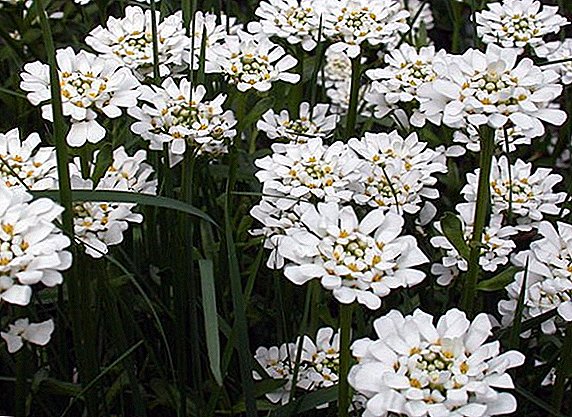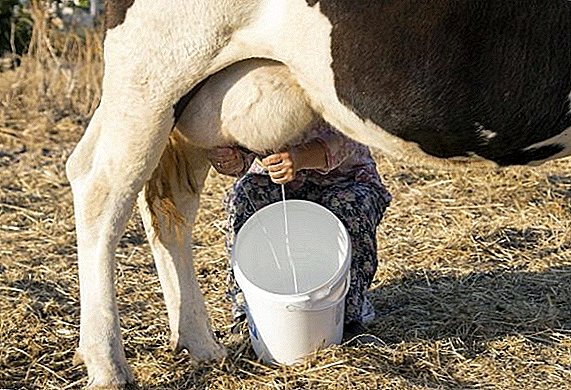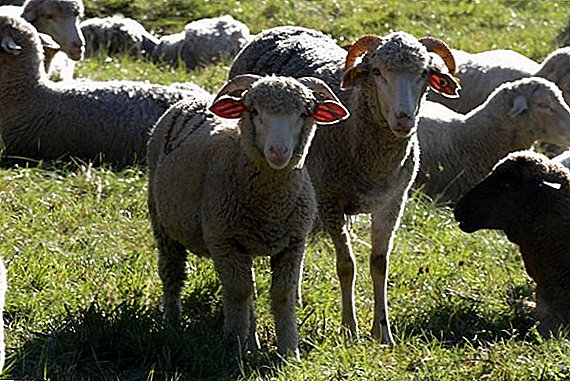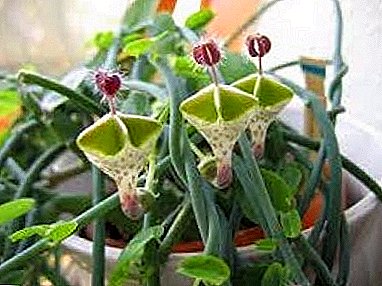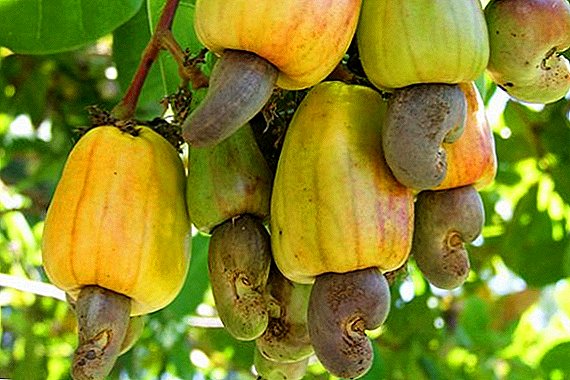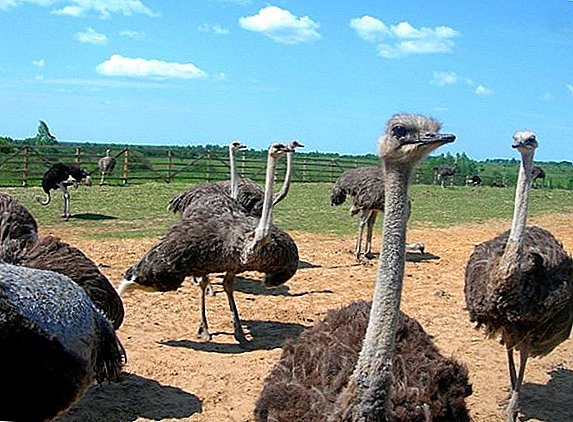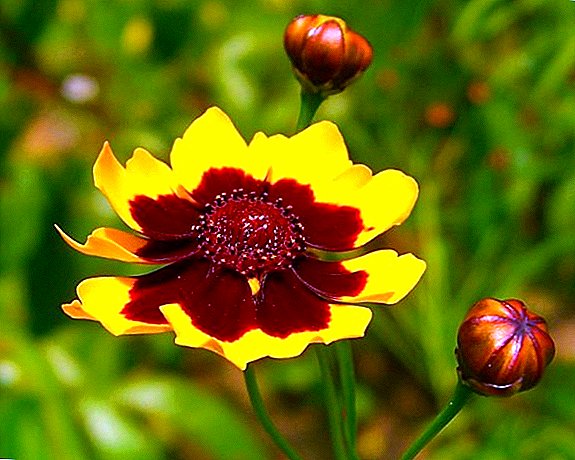 The flower coreopsis is described by description as a small sunflower or chamomile. This perennial plant tolerates the lack of moisture and will bloom until the first frost. Coreopsis is home to the tropics of Africa, North America and Hawaii. The plant grows up to 1 m in length. Beautiful flowers in diameter grow up to 10 cm.
The flower coreopsis is described by description as a small sunflower or chamomile. This perennial plant tolerates the lack of moisture and will bloom until the first frost. Coreopsis is home to the tropics of Africa, North America and Hawaii. The plant grows up to 1 m in length. Beautiful flowers in diameter grow up to 10 cm.
In this article we will tell you all about the agrotechnique of coreopsis cultivation and find out what kind of care a plant needs.
Coriopsis landing site
Coreopsis feels good in a sunny area, and in the shade a plant may begin to languish. You also need to protect the plant from the wind. When sowing seeds in open ground immediately, the plant blooms in the second year.
Growing coreopsis from seeds
Coreopsis is best grown from seed. Planting can be made in the fall, spring and through seedlings.
Did you know? The spectacular and elegant coreopsis bears a rather incongruous name: its name translates from Latin as "like a bug." At the same time, the flower itself has nothing in common with insects, but its seeds are really poured bugs.
Sowing seeds in open ground in autumn
 You can grow coreopsis in the fall if you live in a region with a warm climate. The flower has cold-resistant qualities and it allows you to plant seeds in open ground immediately. When planting in the fall, the plant shows excellent seed germination and earlier flowering.
You can grow coreopsis in the fall if you live in a region with a warm climate. The flower has cold-resistant qualities and it allows you to plant seeds in open ground immediately. When planting in the fall, the plant shows excellent seed germination and earlier flowering.
It is important to know that Before sowing you need to prepare the soil. Since a perennial plant will grow more than one year in one place, it is better to make complex mineral fertilizers when loosening the earth.
Planting of coriopsis seeds is carried out in loose drained soil. Keep a distance of 20 cm between them.
Important! To avoid seed rotting, it is better not to water the beds during the autumn planting.
Sowing seeds in open ground in spring
If you decide to plant coreopsis seeds in open ground, you will notice shoots in a couple of weeks.
In April, in warm climates, you can begin to sow coreopsis in open ground, but if you have a short and cool summer, it is better to land the annual plant through the seedlings. Based on the climate, weather, quality of seeds and soil, you can decide when to sow the seeds in the ground.
To create a beautiful flower bed, it is better to keep a distance of 20 cm between them.
Did you know? Coreopsis has a different name - "the sun in the garden."
Sowing seeds for seedlings
 Growing coreopsis, especially valuable varieties, is best done through sowing on seedlings. Do it better in March. Seeds need to be scattered over the surface of damp earth in a pot with good drainage, which must be disinfected before. Then you need to cover the container with a film or glass.
Growing coreopsis, especially valuable varieties, is best done through sowing on seedlings. Do it better in March. Seeds need to be scattered over the surface of damp earth in a pot with good drainage, which must be disinfected before. Then you need to cover the container with a film or glass.
Coreopsis unpretentious to the composition of the soil mixture. It is better to plant it in loose, light and drained soil. It should contain nutrients, but in moderation, since the surplus leads to a rapid increase in foliage.
Also coriopsis does not tolerate stagnation of water and high acidity.
If you want your seeds to sprout faster, process them before planting with Epin biostimulator. Shoots appear in a couple of weeks.
Important! Do not let the seeds dry out. It is better to spray them with water.
How to care for coreopsis in the process of growing
Care Coresis is the next step to the proper development of the plant. Next we will tell you how to care for him.
How to conduct watering
 With proper watering, coriopsis blooms longer and more abundantly. In dry summer you need to water the plant more often, but this is only in the case of cultivation in the open field. If you grow in pots - you need to water when the soil dries out.
With proper watering, coriopsis blooms longer and more abundantly. In dry summer you need to water the plant more often, but this is only in the case of cultivation in the open field. If you grow in pots - you need to water when the soil dries out.
Fertilization
Fertilize the plant better with organic fertilizers such as compost. Bring top dressing in spring and summer during flowering. Fertilizers make the plant lush and prolong flowering. If you do not have compost, you can use complex fertilizer. Also many years coriopsis fertilized and after pruning. It does not hurt the plant, and coreopsis will bloom again.
Trimming coreopsis
Coreopsis should be trimmed after flowering. If you want to get a constant flowering, you need to trim the flowering buds. In the autumn, it is better to prune the above-ground part of the coreopsis with garden shears. You also need to provide support for high grades of culture.
Combination of Coreopsis with other plants
Coreopsis is grown in the garden with other neighbors - delphinium and blue sage. You can plant a number of roses, rudbeckia or lilies.
 Low-growing varieties are best planted as decoration borders, in pots or terraces. You can land a coriopsis around the perimeter of lawns or arrange small flowerbeds between the sidewalk or walkway. High varieties create an unusual carpet in the group with annuals, but it is better to plant them into the background.
Low-growing varieties are best planted as decoration borders, in pots or terraces. You can land a coriopsis around the perimeter of lawns or arrange small flowerbeds between the sidewalk or walkway. High varieties create an unusual carpet in the group with annuals, but it is better to plant them into the background.
Also may come up and irises, petunias, dahlias, zinnias, sweet peas and marigold. They are planted around the perimeter, and in the background - coreopsis. Landing a coreopsis around a small fountain can be a beautiful option.
Disease and pest resistance
Coreopsis is resistant to diseases and pests, but there is no absolute guarantee.
Most often the plant infects leaf rust and fusarium In this case, you need to pick off the damaged leaves, and then spray coreopsis fungicides. If this does not help, it is better to completely cut down the bush. It is necessary to break off the leaves, which are stained.
When coreopsis is delayed in growth, and the tops and buds begin to curl up into a tube, you will have to remove the shrub completely, as the plant is infected with a viral infection.
 If your plant is affected aphids it is better to use drugs for aphids, but before that we recommend using folk remedies. Caterpillars and Zhukov collected by hand.
If your plant is affected aphids it is better to use drugs for aphids, but before that we recommend using folk remedies. Caterpillars and Zhukov collected by hand.
Wintering Perennial Coreopsis
In winter, it is better to shorten the stems at the root. This applies to those regions that relate to a warm climate. In cold weather it is better to cover coreopsis with a layer of fir branches or leaves. So the plant perezimuet well under the snow and bloom after winter.
Vegetative breeding methods
Coreopsis can be propagated in two ways: division of rhizome and cuttings.
Division of rhizome
This breeding method is the easiest and most reliable. Do it better in March and April. At this time, the snow is already thawed. Around Coreopsis need to loosen the ground and dig up a bush.
Important! Dig the plant gently so as not to damage the rhizome.The root should be divided with a sharp knife. Each delenka should have 3 buds. Then the plant is seated in the places you need and take care of him, as for an adult plant. You will see flowering in the first year after transplantation, since delenki quickly take root to a new place.
Reproduction by cuttings
 Propagation by cuttings is carried out in the summer, around June-July. Healthy shoots need to be cut 10 cm below the internode. Then they need to be transplanted into seedlings. From the bottom also need to remove the leaves. In one pot you can place up to two cuttings. Pots should be placed in partial shade and often watered. With this care, the plant quickly takes root and will flourish in the near future.
Propagation by cuttings is carried out in the summer, around June-July. Healthy shoots need to be cut 10 cm below the internode. Then they need to be transplanted into seedlings. From the bottom also need to remove the leaves. In one pot you can place up to two cuttings. Pots should be placed in partial shade and often watered. With this care, the plant quickly takes root and will flourish in the near future.
Coreopsis - unpretentious plant, and landing and care will give you pleasure. If you do everything right, the plant will bloom quickly and will delight with its flowers.


